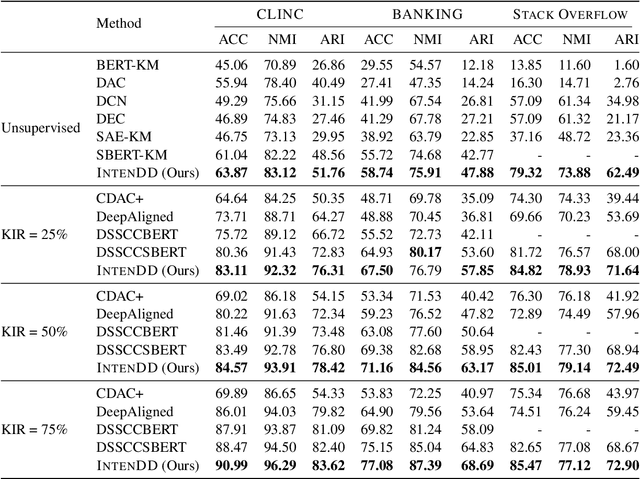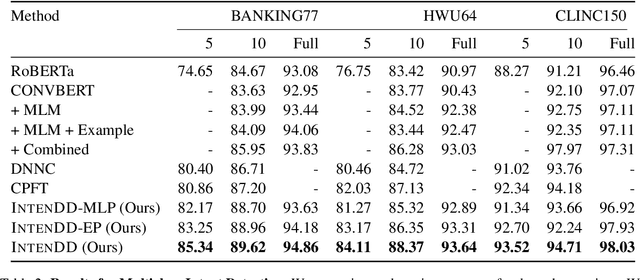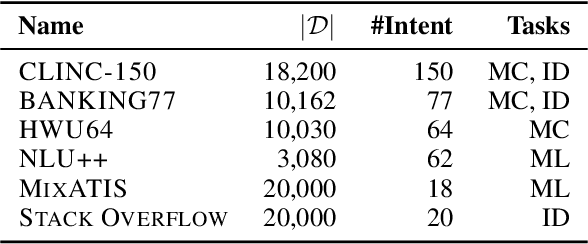Shivasankaran V P
IntenDD: A Unified Contrastive Learning Approach for Intent Detection and Discovery
Oct 25, 2023



Abstract:Identifying intents from dialogue utterances forms an integral component of task-oriented dialogue systems. Intent-related tasks are typically formulated either as a classification task, where the utterances are classified into predefined categories or as a clustering task when new and previously unknown intent categories need to be discovered from these utterances. Further, the intent classification may be modeled in a multiclass (MC) or multilabel (ML) setup. While typically these tasks are modeled as separate tasks, we propose IntenDD, a unified approach leveraging a shared utterance encoding backbone. IntenDD uses an entirely unsupervised contrastive learning strategy for representation learning, where pseudo-labels for the unlabeled utterances are generated based on their lexical features. Additionally, we introduce a two-step post-processing setup for the classification tasks using modified adsorption. Here, first, the residuals in the training data are propagated followed by smoothing the labels both modeled in a transductive setting. Through extensive evaluations on various benchmark datasets, we find that our approach consistently outperforms competitive baselines across all three tasks. On average, IntenDD reports percentage improvements of 2.32%, 1.26%, and 1.52% in their respective metrics for few-shot MC, few-shot ML, and the intent discovery tasks respectively.
 Add to Chrome
Add to Chrome Add to Firefox
Add to Firefox Add to Edge
Add to Edge